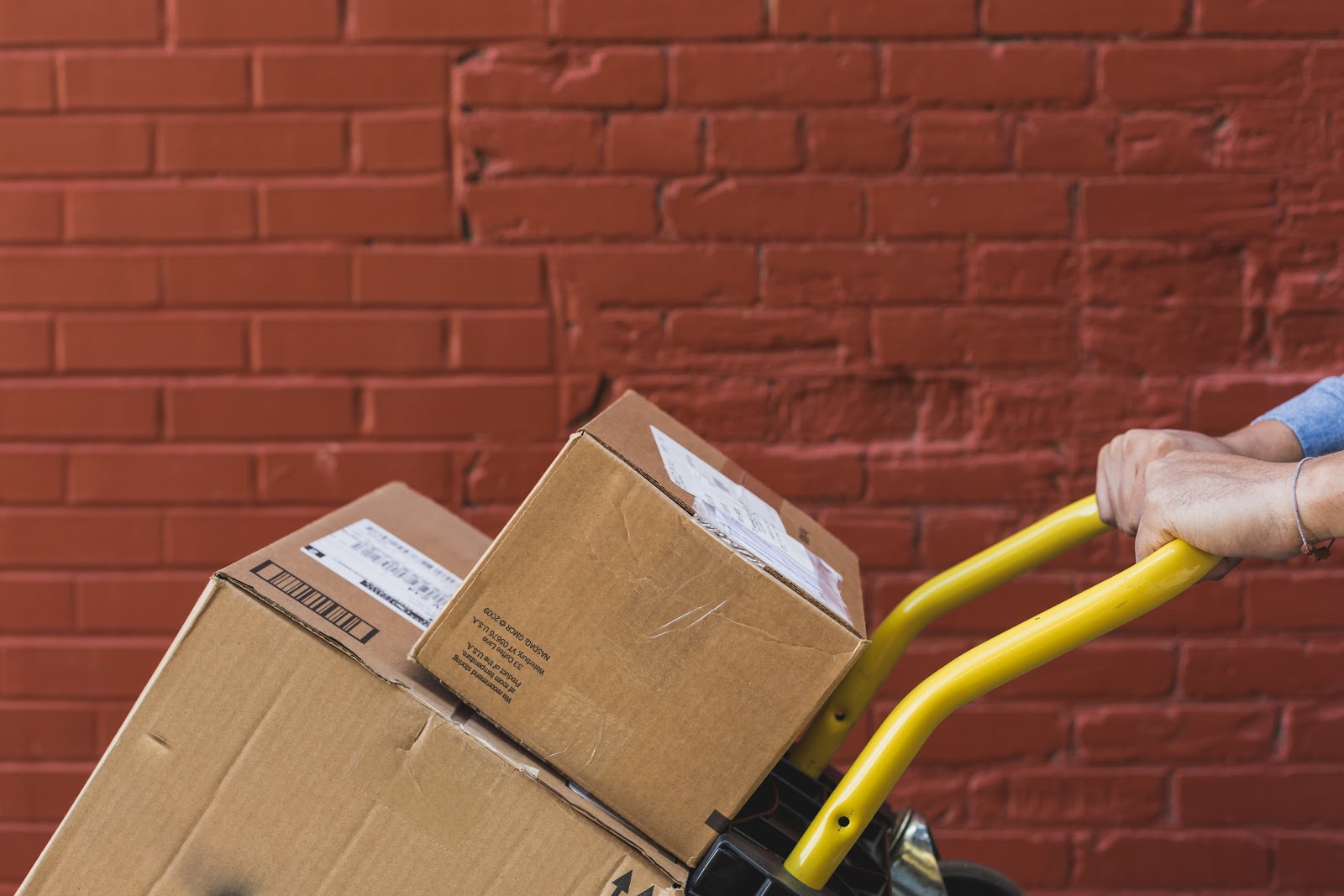Just like all kinds of businesses, an e-commerce business also starts small. Owners handle daily orders manually, and as your business grows, they add more staff, storage, and longer shifts. However, this move is only applicable for a limited time. As business success goes abroad, an increase in the volume of orders, the complexity of work, and lines per order may occur, prompting you to upgrade your facility and obtain some automation to make work much easier.
E-commerce is mostly associated with fulfillment strategy. But how does fulfillment affects your business?
What is a Fulfillment Strategy for E-commerce?
Once your website becomes active, you will start getting lots of orders, and you greatly need the plan to fulfill these orders. There are options that entrepreneurs can partake in, either they outsource the fulfillment and then distribute it or just set it up near your place.
A fulfillment strategy in E-commerce is beneficial for your business, especially because of those companies who offer an end-to-end solution. These fulfillment companies take the products from their warehouse, put them in the package, and give them to shippers, then finally send an automated email to your customers will know that their package is in transit. Fulfillment companies can also handle credit-card processing, reordering products, offering customer services, sending notices for package shipment, and even handling returned items.
What are the types of Fulfillment?
There are different types of fulfillment that every merchant should know – dropshipping, self-fulfillment, and 3rd party fulfillment.
1st Strategy: Drop Shipping

Though more appealing than the other types, dropshipping is also very risky, but e-retailers really love taking the risk. Why do retailers love dropshipping?
Simple! Dropshipping offers a complete hands-off approach to entrepreneurs. The process of dropshipping is very simple. The merchant looks for a partner carrying a product on sale. The merchant then sells these products on their website. Once a purchase is made, the merchant will send the order to the supplier tasked with fulfilling it. All the more that makes it appealing is the fact that drop shippers handle email marketing, social media handling, content customer relations, and even design. You won’t have to worry about anything else.
Perks of Dropshipping
- Inventory or warehouse is not required.
You will never have to pay for storage and inventory of items.
- Focus on selling
With dropshipping, you won’t have to mind anything like the storage of the product, inventory, and other because your drop shipper will handle it all. You only need to create effective online marketing so more people will know about your products and eventually purchase them.
- You can coordinate with many suppliers.
With dropshipping, you are not obliged to do business with a single supplier. You are free to work with multiple suppliers for as many as you want.
However, there are still drawbacks with dropshipping that needs to be addressed accordingly.
Drawbacks of Dropshipping
- Dropshipping has no branding
This is one of the major disadvantages of dropshipping. Some suppliers deny sending branded TLC into the orders, one thing that you can get from in-house fulfillment.
- Dropshipping may have several return issues
As advantageous as it may be, dropshipping also encounter numerous issues with their products, prompting customers to return it. Good news! You won’t have to deal with these returns because the product will be sent back to the supplier for quick feedback.
- Dropshipping restocks quite a while
The product supply mainly relies on the supplier. Soon, when the product gets out of stock, some suppliers will leave that way for some time, prompting potential customers to look for other stores to buy.
2nd Strategy: Self-Fulfillment
A first time online merchant would think this way as the best fulfillment they could get – they stock products at home, pack them when someone orders and send it to the customers on their address. Self-fulfillment or commonly known as in-house fulfillment is a traditional strategy of almost all first-time sellers.
One of the greatest thing about self-fulfillment is you take the full control of the products you sell. You also have an access to the inventory whenever you want to check on something, you are aware of the things that are happening in each of your orders and finally, you can get the products for your customers whenever you like.
The control, which is the primary advantage of self-fulfillment, opens up another set of important opportunities.
Perks of Self-Fulfillment
- Self-fulfillment makes you aware of your inventory
Products you sell are not stocked somewhere else, they are inside your vicinity, making it a lot easier to track inventories whenever you want.
- Self-fulfillment allows you to personalize your packaging
Believe it or not, adding a personal touch to your packaging helps in boosting brand awareness. You can put a signature or a simple note that your customers can see once they unbox it.
- Self-fulfillment allows you to restock more easily
If you found out that a product is ready for restocking, you can do it immediately without involving other parties that could slow down the process.
Like any other things in this world, control also is a double-edged sword. Here are some of its disadvantages that you should note.
Drawbacks of Self-Fulfillment
- Self-Fulfillment is time-consuming
As much as you can control everything that goes in and out of your warehouse, self-fulfillment is nonetheless, very time-consuming. You will have to do everything, starting from the repacking of products up to the sending.
- Self-fulfillment is expensive
As your business grows, you will have to deal with lots of orders that you might end up hiring more employees and an entire warehouse to stock your products. These needs larger money, are you ready for it?
3rd Strategy: 3rd Party Fulfillment
3rd party fulfillment, better known as Outsourced Fulfillment, draws between self-fulfillment and dropshipping. This type of fulfillment has the advantages of dropshipping. You select a logistics provider, ship the inventory to their warehouse, and sends the orders on their own for your customers. This 3rd party fulfillment isn’t as easy as dropshipping and similar as with in-house fulfillment, you will still have to buy some products.
Perks of 3rd Party Fulfillment
- 3rd Party Fulfillment avoids stock out
Just like the advantage of self-fulfillment, this type of fulfillment helps avoid stock-outs. You can stock immediately once the product runs out to avoid losing some of your valued customers.
- 3rd Party Fulfillment is easy to handle
Just like with dropshipping, 3rd party fulfillment is easy to handle especially when you get a trusted 3rd party logistics provider.
Drawbacks of 3rd Party Fulfillment
- You need to determine the costs
With 3rd Party Fulfillment, you will have to Magestore Blog, prompting you to understand the cost to avoid paying more than you can earn. You can choose the pick and pack, monthly fee or storage, as long as your margins are intact.
- Less to nothing chances of branding
Those 3PLs want efficiency. This means that they may not permit any branded materials to be packaged as it might disrupts their workflow.
For a better understanding on how e-commerce fulfillment strategy affects your business, watch this video:
Your business is ready to scale; how ready is your fulfillment strategy?
Thanks to Dave Kang.
Conclusion
You need to know everything about your business so you will know which one to choose. At the end of the day, what fits your business is the only thing that matters most.

About the author: Naida Alabata is a content marketing specialist at Grit.ph and an entrepreneur in the Philippines.
She opts to share her expertise and knowledge in business development, digital/content marketing, and e-commerce through guest posting.
Don’t forget to subcribe Magestore Blog to get the lastest Magento and Ecommerce Update!




1 Comment
Hey, Nice information! Just want to share my views over this. There is no doubt that better, free and fast shipping and fulfillment makes customer happier. While order fulfillment may not be the most glamorous aspect of running an ecommerce business, it is a function that directly impacts an online merchant’s bottom line. . The changing times and customer requirements have changed the industry and E-commerce boom fuels the growth of courier firms.
A recent study reveals, that 61% of shoppers will abandon their cart if shipping, taxes, and other fees are too high.
So, free shipping and returns surely play an important role in the customers buying behaviour.